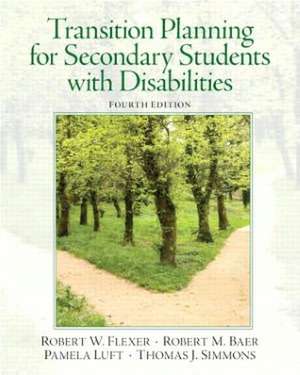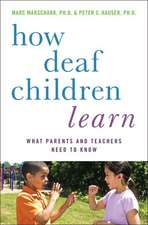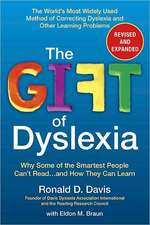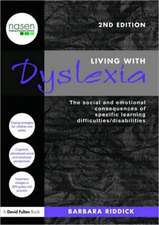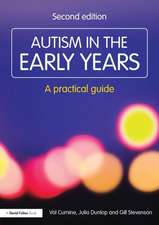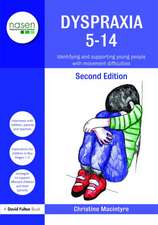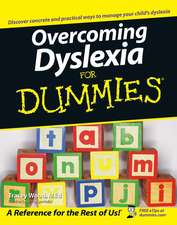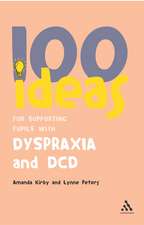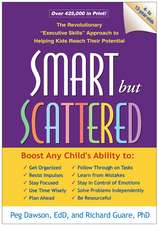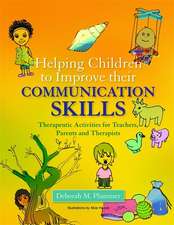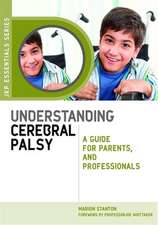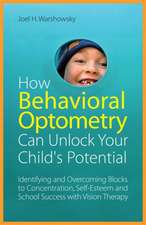Transition Planning for Secondary Students with Disabilities
Autor Robert W. Flexer, Robert M. Baer, Pamela Luften Limba Engleză Paperback – 6 sep 2012
Preț: 1104.25 lei
Preț vechi: 1434.10 lei
-23% Nou
Puncte Express: 1656
Preț estimativ în valută:
211.33€ • 218.31$ • 175.88£
211.33€ • 218.31$ • 175.88£
Carte disponibilă
Livrare economică 05-19 martie
Preluare comenzi: 021 569.72.76
Specificații
ISBN-13: 9780132658119
ISBN-10: 0132658119
Pagini: 408
Dimensiuni: 203 x 249 x 15 mm
Greutate: 0.64 kg
Ediția:Revised
Editura: Pearson
ISBN-10: 0132658119
Pagini: 408
Dimensiuni: 203 x 249 x 15 mm
Greutate: 0.64 kg
Ediția:Revised
Editura: Pearson
Notă biografică
Robert Baer is the Director of the Transition Center at Kent State University. In this role, he currently directs personnel preparation, demonstration, and research projects related to transition, including Ohio's Longitudinal Transition Study (OLTS) of Special Education Outcomes, TTW endorsement training, career-technical teacher training, and campus work and college experience programs for youth and young adults with disabilities. Dr. Baer has more than 35 years in the special education and has directed residential programs for adults with disabilities, supported employment programs for young adults with disabilities, and research for the Ohio Department of Education. Pamela Luft is an Associate Professor of Special Education at Kent State University in Ohio and the Director of the Deaf Education program. She received her M.Ed. in Deaf Education from McDaniel College, her M.S. in Technology for Persons with Disabilities from the Johns Hopkins University, and her Ph.D. from University of Illinois at Urbana-Champaign in Special Education. She worked in public, special day, and residential schools as a teacher, behavior specialist, career coordinator, and program administrator before getting her doctorate. Her research and grant projects have focused on transition services and rehabilitation services for the deaf. She has published on issues related to transition, technology employment of persons with disabilities, special education policy, and instructional practices. Pamela Luft is an Associate Professor of Special Education at Kent State University. She worked for 15 years with D/HH students across all school settings and age groups. Her research and grant projects have focused on transition services and rehabilitation services for the deaf, language, and literacy.
Cuprins
Section 1 Implementing Transition Systems Chapter 1 A Framework For Positive Outcomes Chapter 2 Transition Legislation And Models Chapter 3 Multicultural And Collaborative Competencies For Working With Families Chapter 4 Career Development Theories For Transition Section 2 Creating A Transition Perspective Of Education Chapter 5 Appropriate Transition Assessment Chapter 6 Developing Postsecondary Goals Chapter 7 Identifying Courses Of Study Chapter 8 Collaborative Transition Services Chapter 9 Developing And Teaching The Transition Iep Section 3 Promoting Movement To Postschool Environments Chapter 10 Coordinating Transition Services Chapter 11 Transition To Postsecondary Education Chapter 12 Transition To Employment Chapter 13 Independent Living And Community Participation
Textul de pe ultima copertă
In this comprehensive, practical guide to understanding the varied transition needs of students with disabilities and the potential options and career paths in transition education pre- and in-service teachers and professionals get the support they need to develop and implement transition activities and programs. The text organizes transition topics around four essential elements of transition and a backward planning process. In this edition, a new organization and four new chapters improve the focus and readability for the student new to transition. This new Fourth Edition features: A look at assessments for developing self-determined postschool goals, supporting the goals through courses of study and transition services, and implementing IEP goals toward postschool goal refinement and completion in themodel presented for the transition IEP. A framework for backwards and person-centered planning and self-determination presented in the new chapter, Developing Postschool Goals . Strategies for IEP goal development presented in a new chapter, Writing IEP Goals for Transition Teaching . Better organization of coordinator information by the Kohler Taxonomy in the revised chapter, Transition Coordination . A new chapter, Identifying Courses of Study, which more clearly aligns transition with standards-based curriculum. A clear look at major ideas, concepts, and strategies through the Critical Points features that provide summaries in line with each major chapter heading. Opportunities for students to see the concepts in action through the text s diverse case studies and applications that illustrate organizing concepts and provide tips or recommendations for practice."
